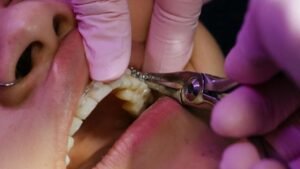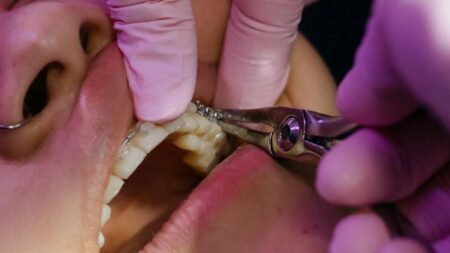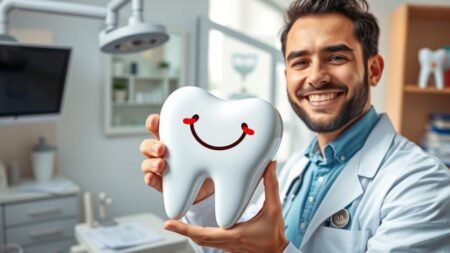Ever thought a dentist visit could be stress-free and painless? Modern dentistry says ‘yes’ with conscious sedation and dental comfort techniques. You don’t have to fear or feel discomfort during dental care. Thanks to new solutions, getting your teeth checked can be smooth and easy.
For those who dread the dentist or want a smoother visit, dental anesthesia has changed the game. It’s made dental care less scary and more comfortable for everyone.
Key Takeaways
- Conscious sedation is a game-changer for anxiety-free dentistry, offering a twilight sleep state.
- Nitrous oxide, commonly known as laughing gas, is a quick and effective option for pain-free dental care that allows a swift recovery.
- IV sedation and oral conscious sedation provide deeper relaxation suited for severe dental anxiety and longer procedures.
- Local anesthetics like lidocaine and articaine provide numbing effects for simpler procedures, ensuring comfort during and after treatment.
- Understanding the spectrum of sedation can help patients with various needs receive dental comfort techniques tailored to them.
- Low incidence rates of post-anesthesia complications highlight the safety of current dental comfort techniques.
The Role of Dental Anesthesia in Patient Comfort
Dental anesthesia is key to making dental visits comfortable. It helps make procedures easier. By learning about the different types of anesthesia and sedation, you can choose what’s best for you. This ensures a pain-free and worry-free dental visit.
Understanding the Basics of Dental Anesthesia
Dental anesthesia uses various techniques to reduce pain, discomfort, and anxiety during dental work. These methods include local anesthesia, which numbs a specific area, and general anesthesia, which puts you to sleep. These anesthetics help with everything from cleanings to surgeries, making them painless and stress-free.
Types of Dental Anesthesia and Their Applications
Dentists choose different anesthesia types based on the procedure’s complexity and your anxiety level. Nitrous oxide, or laughing gas, is often used to calm nerves and lightly sedate you. It has no lasting effects, so you can drive home after. For deeper sedation, oral conscious sedation and IV sedation are used. These are good for longer or more detailed procedures.
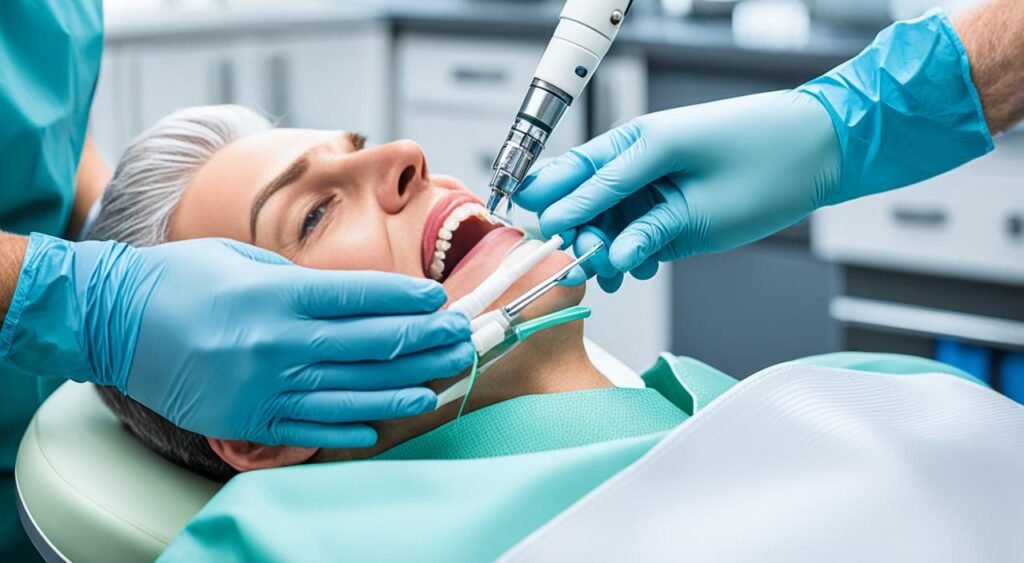
Fillings, Root Canals, Gum Surgery
| Type of Anesthesia | Common Uses | Benefits |
|---|---|---|
| Local Anesthesia | Pain-free procedure, patient remains awake | |
| Nitrous Oxide | General Dentistry, especially for anxious patients | Quick onset and recovery, reduces dental anxiety |
| Oral Conscious Sedation | Longer procedures, patients with moderate anxiety | Patient remains conscious but relaxed |
| IV Sedation | Complex surgeries, very anxious patients | Deep sedation, often with little recall of the procedure |
Dental anesthesia and sedation dentistry make dental visits better by keeping you comfortable and calm. Whether it’s a simple cleaning or a complex surgery, the goal is to control pain and reduce anxiety. This leads to better dental care and happier patients.
Addressing Dental Anxiety with Sedation Dentistry
Sedation dentistry has changed how we handle managing dental fear and dental phobia solutions. Many people feel anxious at the dentist, leading them to delay care. This delay can make oral health problems worse. With sedation options, dentists can make visits more comfortable, encouraging regular check-ups and better care.
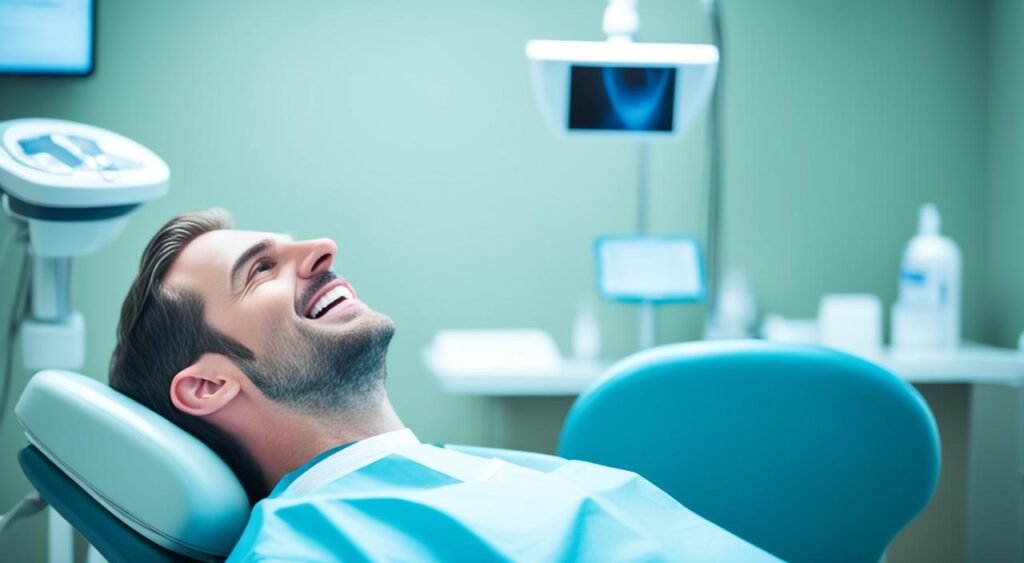
Recognizing Candidates for Sedation Dentistry
It’s important to know who might need sedation dentistry. Ideal candidates have a strong gag reflex, fear needles, or need long procedures done. Those with physical issues that make dental visits hard can also benefit. Sedation makes dental care accessible to everyone, helping them get the care they need without fear.
Assessing the Benefits of Sedation for Various Patient Needs
Sedation dentistry has many benefits for different patient needs. Conscious sedation benefits include feeling less pain, less anxiety, and not remembering the procedure. This is crucial for those with severe anxiety, letting them get through treatments without stress.
There are different levels of sedation, from mild to general anesthesia, based on the patient’s anxiety and the procedure’s complexity. For example, Nitrous Oxide (Laughing Gas) is good for mild anxiety, while IV sedation is used for more complex surgeries or severe fear.
The main aim of sedation dentistry is to stop fear from stopping people from getting dental care. It creates a safe, calm space, helping patients keep their teeth healthy. Sedation options help people overcome their fear, leading to healthier smiles without the usual stress of dental visits.
Navigating the Spectrum of Dental Anesthesia Options
It’s important to know about sedation and anesthesia choices before dental work. The type of anesthesia you pick can change how you feel during and after the procedure. Here’s a guide to help you choose wisely.
Local anesthesia is often enough for simple dental tasks like fillings and crowns. It numbs the area around the tooth, so you’re awake but don’t feel pain. General anesthesia, which makes you sleep, is for bigger surgeries like major oral reconstructions.
- Nitrous Oxide Sedation: This is a light sedation, also called ‘laughing gas’. It’s great for those who need a bit of help to relax. You’ll feel fine after, and you can drive home by yourself.
- IV Sedation: For bigger procedures, IV sedation gives deeper sedation by medicine in your bloodstream. You’ll need someone to drive you home because it makes you very sleepy.
When looking at pain-free dental options, think about your health and how anxious you get. If you’re really scared or anxious, you might need stronger sedation to relax fully. 7994>
| Type of Sedation | Common Use | Recovery Consideration |
|---|---|---|
| Nitrous Oxide | Mild procedures, suitable for all ages | Drive yourself home |
| IV Sedation | Complex surgeries and procedures | Arranged transportation needed |
| General Anesthesia | Extensive surgical procedures | Extended recovery at medical facility |
Talking with your dentist about these options can make your dental visit better. It helps you get care that fits your needs in the sedation spectrum.
Modern Advancements in Anesthetics and Patient Care
Dentistry is always changing, with big steps in pain control and anesthesia technology. These changes make patients more comfortable and make dental work more efficient. New local anesthetics and delivery systems are making dentistry more patient-friendly.
The Evolution of Local Anesthetics
Recent changes in dentistry have made local anesthetics better and faster to recover from. For example, articaine numbs deeply but works faster, making it a top choice for both patients and dentists. This shows how dentistry is moving towards less pain and better experiences for patients.
Breakthroughs in Delivery Methods for Anesthesia
How we give local anesthetics has changed a lot. New technology has brought us computer-controlled devices that give just the right amount of anesthesia. Also, using vibratory devices during shots can distract patients and make them feel less pain.
Using things like topical anesthetics and jet injectors is a big step towards better pain control in dentistry. These methods make patients more comfortable and lower their fear of needles.
| Technique | Impact on Pain Reduction | Patient Anxiety Reduction |
|---|---|---|
| Topical Anesthetics | 484% | N/A |
| Computer-Controlled Delivery | 499% | 18% |
| Vibration Devices | 479% | 15% |
| Warming Anesthetic Solutions | 496% | Significant |
Research and development in anesthesia technology are making treatments more effective and dental care less stressful for patients. These advances are key to keeping patients happy and coming back for care.–>
Dental Anesthesia and Special Considerations
Understanding when to use general anesthesia in dentistry is key for patients and dentists. It’s vital for complex dental work or with certain patient conditions. This ensures the best care for everyone involved.
When General Anesthesia Is Required
General anesthesia is for cases needing a deep sleep to make treatment possible. This includes big surgeries, work on young kids, or for those with severe dental fear. Dentists carefully manage general anesthesia in dentistry to keep it safe and effective.
Here are times when general anesthesia is often needed:
- Long, complex oral surgeries.
- For patients who can’t stay still or are very anxious.
- On young kids who can’t calm down easily.
Safeguards for Patients with Specific Health Conditions
Getting ready for general anesthesia starts long before the surgery. Dentists look at a patient’s health to lower risks. Here are some ways to make anesthesia safety better:
- Pre-Procedural Health Assessment: Checking for allergies and other health issues that could affect anesthesia.
- Customized Anesthetic Plans: Changing the anesthesia plan for patients with special health problems.
- Post-Operative Care and Observation: Watching patients closely after surgery to handle any anesthesia side effects.
In summary, using general anesthesia in dental work needs a lot of knowledge and planning. Dentists must think about anesthesia safety and special dental care considerations. This way, every patient gets safe and effective care.
Conclusion
Your journey to better dental health should be easy and successful. Dentistry has made big steps to make dental care pain-free and comfortable. This is thanks to new dental anesthetics and techniques.
Studies show that anesthetics like articaine, mepivacaine, and bupivacaine work really well. They make procedures from simple fillings to complex surgeries much more comfortable. This helps you feel better during your dental care.
These anesthetics help fight dental fears, making it easier to get the care you need. Dentists use local anesthetics to numb the area or sedation to help you relax. Their main goal is to make sure you’re comfortable and safe.
Getting over dental fears and improving dental health go together. Knowing about dental anesthetics can make you feel more confident at your dentist visits. A good anesthesia plan means you won’t feel pain and helps you trust your dentist more. With your dentist, you can work towards a healthier smile.
FAQ
What is dental anesthesia and how does it improve comfort during dental procedures?
Dental anesthesia uses medications to make patients comfortable during dental treatments. These can be sedatives for relaxation or local anesthetics to numb the mouth. This helps patients feel no pain during their dental care.
What types of dental anesthesia are available for patients?
Patients can choose from local anesthesia like lidocaine, or nitrous oxide for mild sedation. There’s also oral conscious sedation with Halcion, IV sedation for deeper relaxation, and general anesthesia for full unconsciousness. The choice depends on the patient’s needs and the procedure.
How does sedation dentistry help individuals with dental anxiety?
Sedation dentistry offers different levels of sedation to reduce dental anxiety. It makes patients calm and relaxed during dental procedures. This helps those with dental phobias get the care they need without feeling stressed.
How can I know if I’m a candidate for sedation dentistry?
If you feel anxious about dental visits, have a strong gag reflex, or are sensitive to pain, you might be a candidate. A dentist can help determine the best sedation option for you after a detailed consultation.
Can children receive dental anesthesia?
Yes, children can get dental anesthesia when needed. The type and amount are based on their health, age, and dental needs. Pediatric dentists use safe and effective anesthesia to make children comfortable during dental care.
What are the latest advancements in dental anesthesia and patient care?
New advancements include better local anesthetics and less invasive methods like electronic nerve stimulation and laser drills. There’s also a way to reverse numbness right after the procedure. These changes aim to make patients more comfortable and help them recover faster.
What safety measures are in place when general anesthesia is used in dentistry?
When using general anesthesia, safety steps are taken to protect the patient. The procedure happens in a well-equipped place and is watched over by experts. Beforehand, a health check is done, and monitoring equipment tracks vital signs to prevent problems.
Are there any special considerations for patients with specific health conditions receiving dental anesthesia?
Yes, patients with health issues like heart disease or breathing problems need special care with dental anesthesia. Dentists will check their health and work with doctors to make a safe anesthesia plan. This helps reduce risks for these patients.
